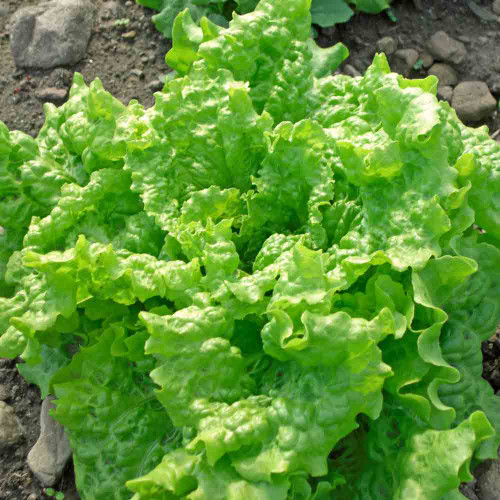Description
Creeping Thyme - History's Fragrant Footpath
Creeping Thyme seems dainty: a dwarf, mat-forming herb with stems that barely rise a few inches from the earth and leaves so small they seem sketched in miniature. Yet, to dismiss it as merely a decorative filler is to overlook the immense resilience and ancient power packed into its tiny frame. This is a plant that thrives where others perish, a survivor that carpets barren, rocky ground with fragrant, evergreen life. It is a plant whose very name is derived from the Greek word for "courage" and was once presented to knights as an emblem of bravery. It is a quiet ecological engine, summoning pollinators with its vibrant flowers while repelling pests with its potent chemistry.
Details
Creeping Thyme offers a living lesson in resilience - survival through minimalism. A classic member of the mint family, this semi-woody, evergreen perennial forms a durable, fragrant, mat-forming, low-growing groundcover that is both beautiful and highly functional allowing it to endure harsh conditions. Its primary growth habit is horizontal, with thin, tough stems that creep horizontally, rooting at the nodes wherever they touch the soil. This allows a single plant to form a dense, long-lasting weed-suppressing carpet, typically growing only 1 to 3 inches tall while spreading 12 to 18 inches wide, a low profile that minimizes exposure to drying winds and conserves moisture.
The leaves are a marvel of minimalistic, drought-tolerant design, tiny and elliptical (rarely over 1/4 inch long), with a soft, often hairy texture that gives the foliage a lovely gray-green or blue-green hue. From late spring through summer, the mat of foliage transforms, sending up short, erect stems covered in dense clusters of tiny, two-lipped flowers in vibrant shades of pink, lavender, or purple, creating a stunning carpet of color. As a hardy perennial, it is well-suited for USDA Zones 4-9. The Thymus serpyllum is considered to be the true "Wild Thyme."
History
The story of Creeping Thyme is deeply interwoven with human history, rooted in ancient concepts of courage and purification. Its very name, Thymus, derives from the Greek word thumos, meaning both "courage" and "perfume". The ancient Greeks believed its powerful, invigorating aroma could bestow strength and bravery, using it as incense in temples and rubbing it on their chests before battle. The Egyptians recognized its preservative power, using thyme as a key ingredient in embalming. The Romans, who spread thyme throughout Europe, valued it for purifying their homes and flavoring cheeses and liqueurs. The Roman naturalist Pliny the Elder recommended burning dried thyme to "put to flight all venomous creatures," cementing its reputation as a protective agent.
This legacy of strength continued into the Middle Ages, where it became a powerful symbol of chivalry. Women would often embroider a bee over a sprig of thyme onto scarves given to knights as a token of bravery. It was also placed beneath pillows to aid sleep and ward off nightmares. Besides its symbolic use, it has a long history as a medicinal herb, with teas and decoctions traditionally used to relieve coughs and aid digestion. This treasured European herb was eventually carried to North America by colonists, who brought seeds and starts to plant in their new gardens, where it has since naturalized, demonstrating its enduring resilience.
Uses
While its close relative, Common Thyme (Thymus vulgaris) is the star of the kitchen, Creeping Thyme's primary role is in the landscape, where it excels as a beautiful, low-maintenance, and functional groundcover.
- Ornamental Groundcover: Its dense, low-hugging mat makes it an ideal choice for filling the gaps between stepping stones, where it will release a pleasant fragrance when walked upon. It is also perfect for cascading over rock walls, covering dry slopes for erosion control, or as a lawn substitute in low-traffic areas.
- Ecological Engine: A patch of blooming Creeping Thyme becomes a hub of activity. Its profusion of tiny, nectar-rich flowers acts as a powerful magnet for a wide array of pollinators, including honeybees and butterflies. Beyond this, it serves as a documented larval host plant for the common blue butterfly, making it a fundamental component of their survival and turning a simple garden planting into a habitat.
- Herbal Tea & Foraging: While not considered a primary culinary herb due to its variable aroma and taste, its leaves are perfectly edible and can be used to make a fragrant, traditional herbal tea. It has long been a staple in European folk traditions for making herbal teas and for flavoring oils, vinegars, and even spirits, such as the French digestive Serpolette.
Companion Planting
Creeping Thyme is a powerful ally in an ecological garden, acting as both a guardian and a haven. Its strong aromatic oils make it highly resistant to deer and rabbits. This protective quality extends to neighboring plants, as its scent is reported to confuse and repel pests like cabbage worms and tomato hornworms, making it an excellent companion for brassicas and tomatoes.
Perhaps its most potent power is unseen. A thriving mat of thyme is not just a passive groundcover; it is an active, self-weeding system. The plant releases natural volatile chemical compounds (called allelopathy) from its roots and leaves that significantly inhibits the germination and growth of many common competing weeds, giving the plants you want to grow a distinct advantage.
Planting and Growing Tips
Success with Creeping Thyme hinges on two non-negotiable conditions: full sun and excellent drainage. It requires at least 6 hours of direct sun to thrive and produce its best floral display. It detests "wet feet" and will not survive in heavy clay or waterlogged soil. It is perfectly adapted to poor, sandy, gritty, or rocky soils with a neutral to slightly alkaline pH.
Once established, it is the definition of low-maintenance resilience, a plant that "thrives on neglect". However, reaching that stage, particularly from seed, requires a careful understanding of its needs and vulnerabilities. The seeds are minuscule and germination is slow and erratic (14-28 days), and the seedlings are fragile for their first month. For this reason, starting seeds indoors is strongly recommended. The critical rule is that the seeds require light to germinate; therefore, they must be surface-sown and gently pressed into the soil for good contact, not covered. Sow indoors 8-10 weeks before your last frost, keeping the soil consistently moist by misting or bottom-watering, but never waterlogged. Once seedlings emerge, they should be placed under a grow light and kept close to the source (about 2 inches below) to prevent them from becoming weak and leggy.
Transplant hardened-off seedlings outdoors after all danger of frost has passed and they are several inches tall, spacing them 8-12 inches apart. Water new plants regularly until established. Once mature, Creeping Thyme is profoundly drought-tolerant and should only be watered during prolonged dry spells. Overwatering is the single greatest threat to its health. Maintenance is minimal; shear the plants back after flowering to keep them compact and prevent the centers from becoming woody.
Harvesting Tips
When you're ready to harvest for teas or drying, gather the flowering stems in the morning after the dew has evaporated, when the aromatic oils are most concentrated. You can bundle the stems and hang them to dry in a cool, dark, well-ventilated space. Once completely dry, you can crumble the leaves and flowers from the stems and store them in an airtight container.
Learn More
From the soil to the seed to the food you eat - we'll help you grow your best garden!
1 Review
-
Creeping thyme
I've had problems getting these seeds started. when Stephen learned of this he contacted me right away. We talked through the steps needed for success. I/we believe the environmental temperatures were too warm. He sent me a new pack of seeds to try in more favorable conditions. This customer service is so appreciated. In advance, this is a 5 star response.



















